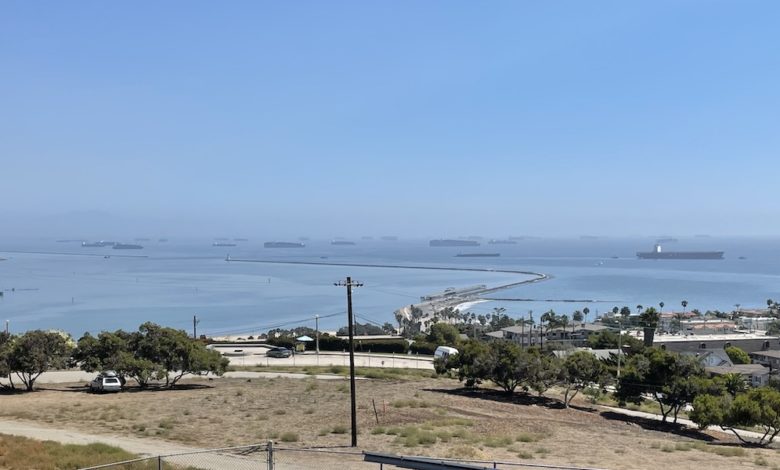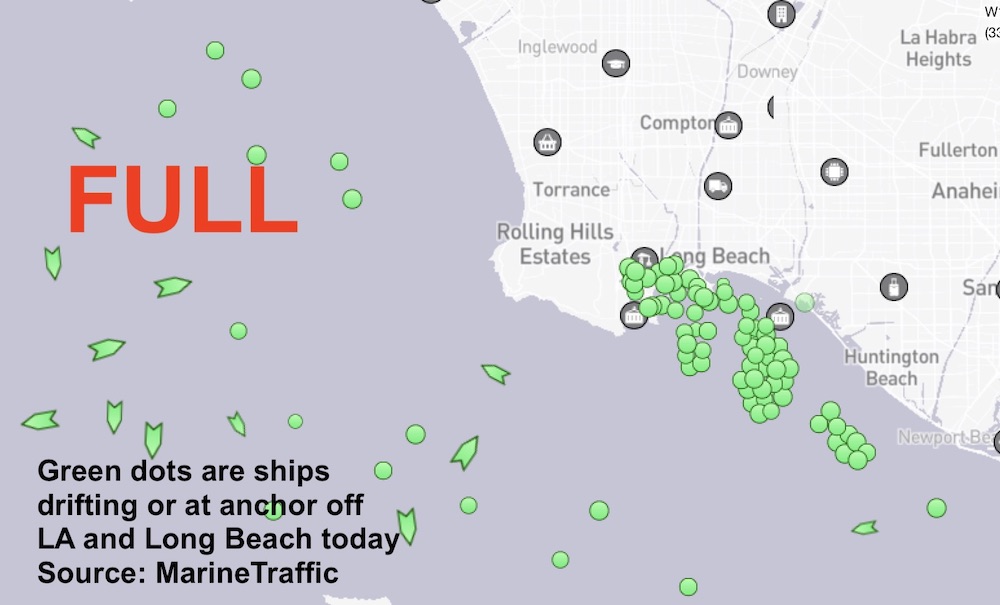Record number of ships forced to drift off southern California

With all anchorages full, and the view from the Californian coastline a vista of steel hulls and laden boxships, record amounts of vessels are being forced to drift off San Pedro Bay. MarineTraffic snapshots of the traffic (see below) require further zooming out to deeper seas as each day breaks new ship queue records.
Yesterday’s update from the Marine Exchange of Southern California shows that there are 95 ships at anchor or drift areas, waiting for berth space to open up at the ports of Los Angeles and Long Beach, America’s top two maritime gateways. Of the 95 vessels in the queue, 70 are containerships. Remarkably there are now 37 ships — including 29 container vessels – being forced to drift in the Pacific.
The process typically sees a vessel drift a number of miles before returning to its original position, something that tends to burn substantial amounts of fuel. Ships that start out at the back of the queue can wait for as long as three weeks now for a berth space to open up.
Speaking about the current extreme supply chain crunch last week as a keynote during London International Shipping Week, Søren Toft, the CEO of Mediterranean Shipping Company (MSC), the world’s second largest containerline, discussed the massive growth in US demand, citing a 33% increase in imports from Asia into the US in the first seven months of the year. MSC has been moving 12 months’ worth of goods within an eight-month timeframe, Toft revealed, telling delegates: “Supply chains are not built for such massive changes.”
Giving an update on operations last month, Gene Seroka, the executive director of the Port of Los Angeles, said the challenge facing the entire supply chain amounts to “squeezing 10 lanes of freeway traffic into five lanes.”
Data from Freightos shows the average time it takes for ocean freight to go door-to-door has increased 43% over the last year, from 50 days to 71.5 days.
Splash reported yesterday that the ports of Los Angeles and Long Beach have expanded the hours during which trucks can pick up and return containers as part of their efforts to improve freight movement and reduce delays.

